We cannot let corruption blind our eyes to the broader reality: blockchain technology has become a settled matter.
Written by: Musol
Recently, the U.S. Senate passed the procedural motion for the GENIUS Act with a vote of 66 to 32, meaning that stablecoins are entering the "operational phase" of federal legislation.
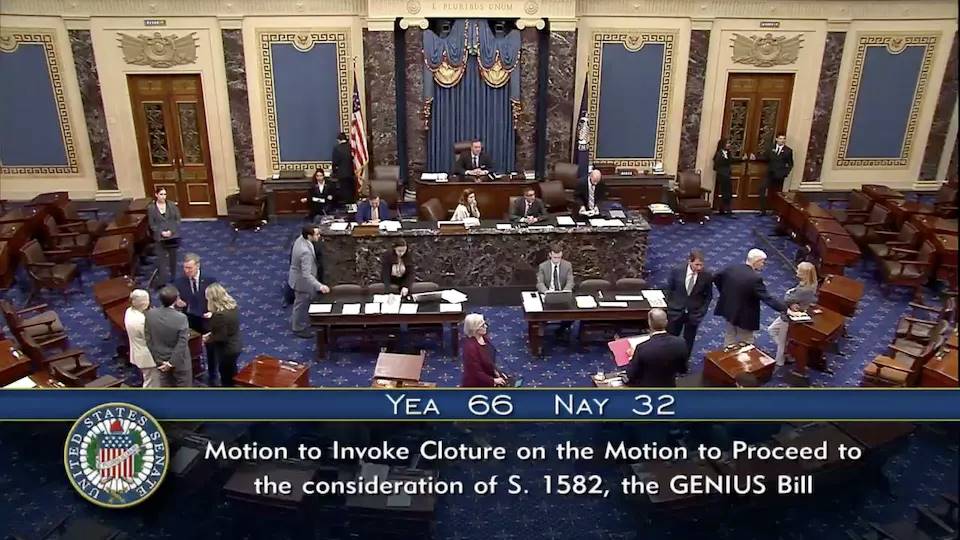
The U.S. Senate advanced the debate on the GENIUS stablecoin bill with a vote of 66 to 32. Source: U.S. Senate
This may be the first time in our generation that we witness "dollar issuance on-chain" entering the legislative core; it is also likely the first time we see whether stablecoins and U.S. Treasury bonds, these two swords of Damocles, will fall to pierce the last utopia of the people. Behind this will be a profound restructuring of the virtual currency, Web3 ecosystem, and global payment landscape.
Pt.1. The Sword of Damocles Coin
Why is the Stablecoin Bill So Important?
Stablecoins, as the name suggests, are cryptocurrencies that are pegged to assets like the U.S. dollar and maintain stable value. They serve as a "bridge" in the crypto market, widely used for trading, cross-border payments, and decentralized finance (DeFi). By 2024, the global stablecoin market size has surpassed $200 billion, with U.S. dollar stablecoins dominating. However, due to the lack of a clear regulatory framework, the stablecoin industry has been operating in a gray area, facing accusations of money laundering, fraud, and systemic risks.

The core objective of the GENIUS Act is to establish clear regulatory rules for stablecoin issuers, including:
Issuance Requirements: Stablecoin issuers must obtain federal or state-level licenses and meet strict capital and reserve requirements.
Anti-Money Laundering and Security: Strengthen anti-money laundering (AML) and know your customer (KYC) measures to ensure stablecoins are not used for illegal activities.
Consumer Protection: Provide transparency and security for users' funds, preventing tragedies similar to the 2022 TerraUSD collapse.
Extraterritorial Jurisdiction: Restrict foreign stablecoins from entering the U.S. market, consolidating the dollar's "hegemonic" position in the crypto world.
This vote is not only about the normalization of the crypto industry but is also seen as a strategic layout for the U.S. in the global fintech competition. As U.S. Treasury Secretary Yellen stated: "U.S. dollar stablecoins will maintain the dollar's status as the international reserve currency."
The Outcome of the Bill: Who Are the Winners and Losers?
If the GENIUS Act passes smoothly, several areas will undergo significant changes:
Winners:
Stablecoin Issuers: Leading issuers like Tether (USDT) and Circle (USDC) will gain legal status; although compliance costs will be high, market trust will significantly increase.
Crypto Exchanges: With clearer regulations, platforms like Coinbase and Kraken are expected to attract more institutional funds, driving a surge in trading volume.
Dollar Hegemony: The bill restricts foreign stablecoins from entering the U.S., further solidifying the global financial dominance of U.S. dollar stablecoins. ECB President Lagarde has warned: "U.S. dollar stablecoins may threaten the euro's monetary sovereignty."
Investors: The normalization of stablecoins will reduce market risks, attracting more traditional capital into the crypto space, driving up asset prices.
Losers:
Non-Compliant Issuers: Small stablecoin projects that cannot meet regulatory requirements may be eliminated.
Foreign Stablecoins: Stablecoins pegged to currencies like the euro or yuan will face restrictions in the U.S. market.
Decentralized Idealists: Strict KYC and AML requirements may undermine the anonymity of cryptocurrencies, sparking community disputes.
What Lies Behind the "Freedom" of Stablecoins?
"From mutual combat to a deadly stampede, the higher you climb, the harder you fall."
Mutual Combat—Why Does Trump Support the Development of Cryptocurrencies?
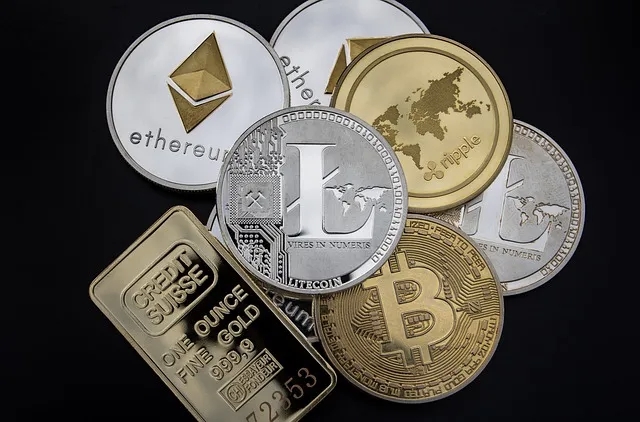
Currently, the two main pain points of cryptocurrencies are—how to exchange with fiat currencies & the volatility of various coins.
To address these two pain points and build a more complete cryptocurrency ecosystem, Tether issued the stablecoin: USDT. Tether claims that upon receiving one dollar from a customer, it will issue one USDT; when the customer returns one USDT and retrieves one dollar, one USDT will be destroyed.
If everything goes well, one USDT is equivalent to one dollar.
As cryptocurrencies continue to develop, many merchants now accept cryptocurrency payments, such as for purchasing pizza. In this case, USDT acts like a "silver note," substituting real "gold and silver" to facilitate currency circulation.
Seems flawless, right?
Are there any bugs? Yes.
Bug 1: Will Tether issue more than it should? For example, if there are only $10 million in equivalent assets (whether in dollars, U.S. Treasury bonds, or stocks), but Tether issues 20 million USDT. Even in the era of silver notes issued by money houses, such occurrences are impossible to completely avoid. Tether has previously been blacklisted by banks in the U.S. and Taiwan due to over-issuance issues.
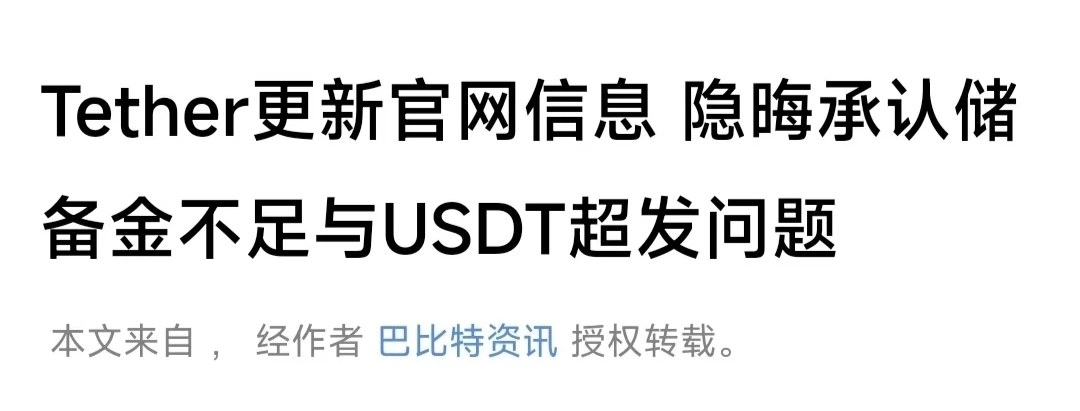
If Bug 1 is merely speculative, then Bug 2 is a real loophole.
Bug 2: After Tether receives one dollar from a customer and issues one USDT, that dollar is not locked in a safe but is used to purchase other forms of assets, such as U.S. Treasury bonds. Once the U.S. Treasury or other sellers of U.S. bonds receive that dollar, it will continue to circulate.
In short, the one dollar in the real world never exits circulation, while one USDT in the crypto world can also act as a "silver note" participating in real-world currency circulation.
The initial $1 becomes $2.
If the U.S. Treasury sells one dollar's worth of U.S. bonds and uses the received dollar to buy USDT, while Tether continues to buy U.S. bonds from the Treasury… ultimately, Tether holds an unlimited amount of U.S. bonds, and the U.S. Treasury holds an unlimited amount of USDT…
And all of this, Tether and the U.S. Treasury have not engaged in any illegal operations.
Deadly Stampede—Moral Transgression
Any form of currency over-issuance is unethical.
Inflation arises from this.
However, we must admit that we have no way to address this.
If we trust U.S. credit, it would never allow its national debt to reach $36 trillion.
If we are pessimistic enough, the scenarios illustrated above will eventually become reality.
The so-called deadly stampede can occur in one scenario where USDT over-issuance leads to insufficient purchasing power, prompting holders to redeem with Tether, forcing Tether to sell U.S. bonds, which could trigger a collapse of U.S. bonds already on the brink of bankruptcy.
Another scenario is that U.S. bonds collapse first, leading to a significant devaluation of Tether's reserve assets, triggering a run on USDT and its devaluation.
Now Trump is arguing with the Federal Reserve; if the Fed remains stubborn, it is not impossible for Trump to bypass the Fed using cryptocurrencies, leveraging Bug 2 to address the urgent issues of U.S. debt.
Drinking poison to quench thirst.
Self-Deception—The Higher You Climb, The Harder You Fall
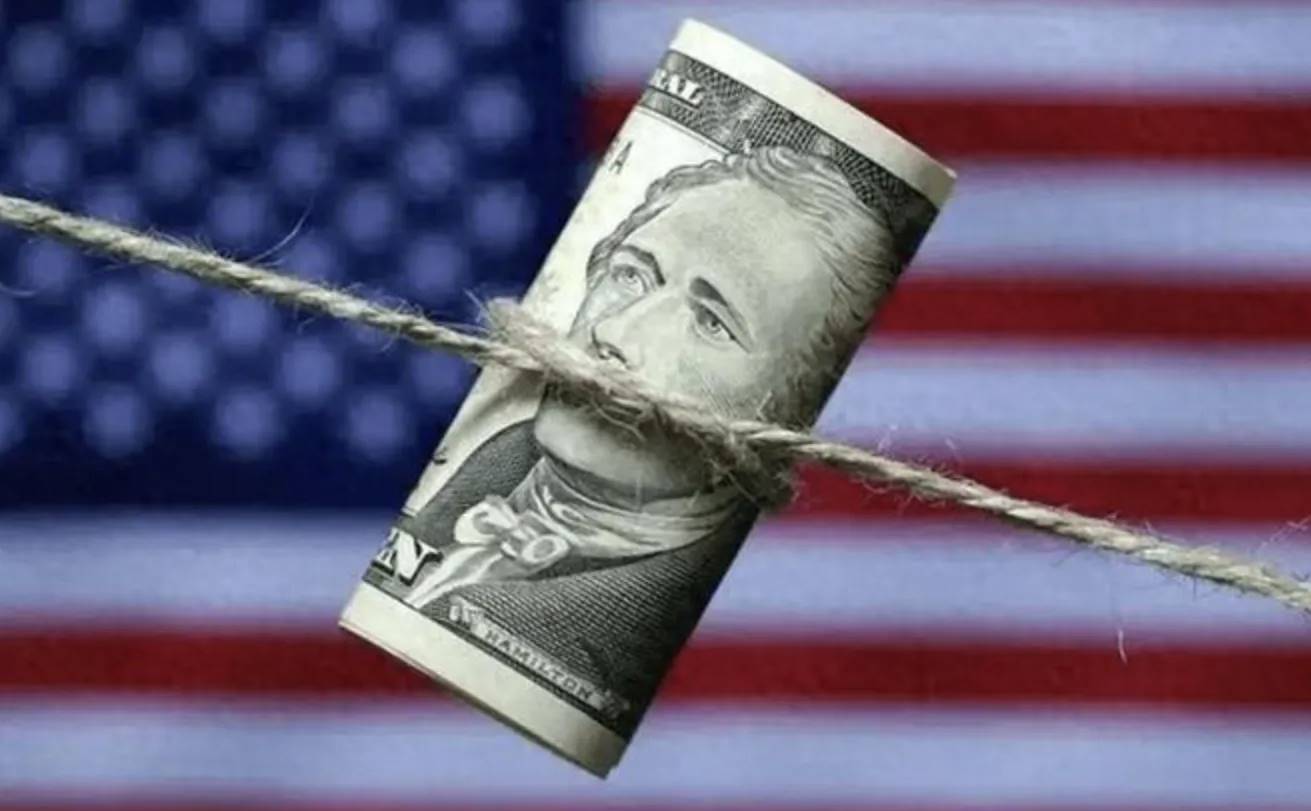
Any form of currency over-issuance is unethical. Tether can issue USDT, but either the dollar received must be completely withdrawn from real-world circulation, or USDT cannot be used to buy pizza and should only circulate within the crypto market, treating it as a network game.
Regardless, one dollar is one dollar; it should never become two dollars. No matter how good the trick is, it is still a trick, a deceptive act. The higher you climb relying on tricks, the harder you will fall later.
“We cannot let corruption blind our eyes to the broader reality: blockchain technology has become a settled matter. If U.S. lawmakers do not provide guidance, other countries will take action—and not in a way that aligns with our interests or democratic values.”
Pt.2. The Sword of Damocles Debt
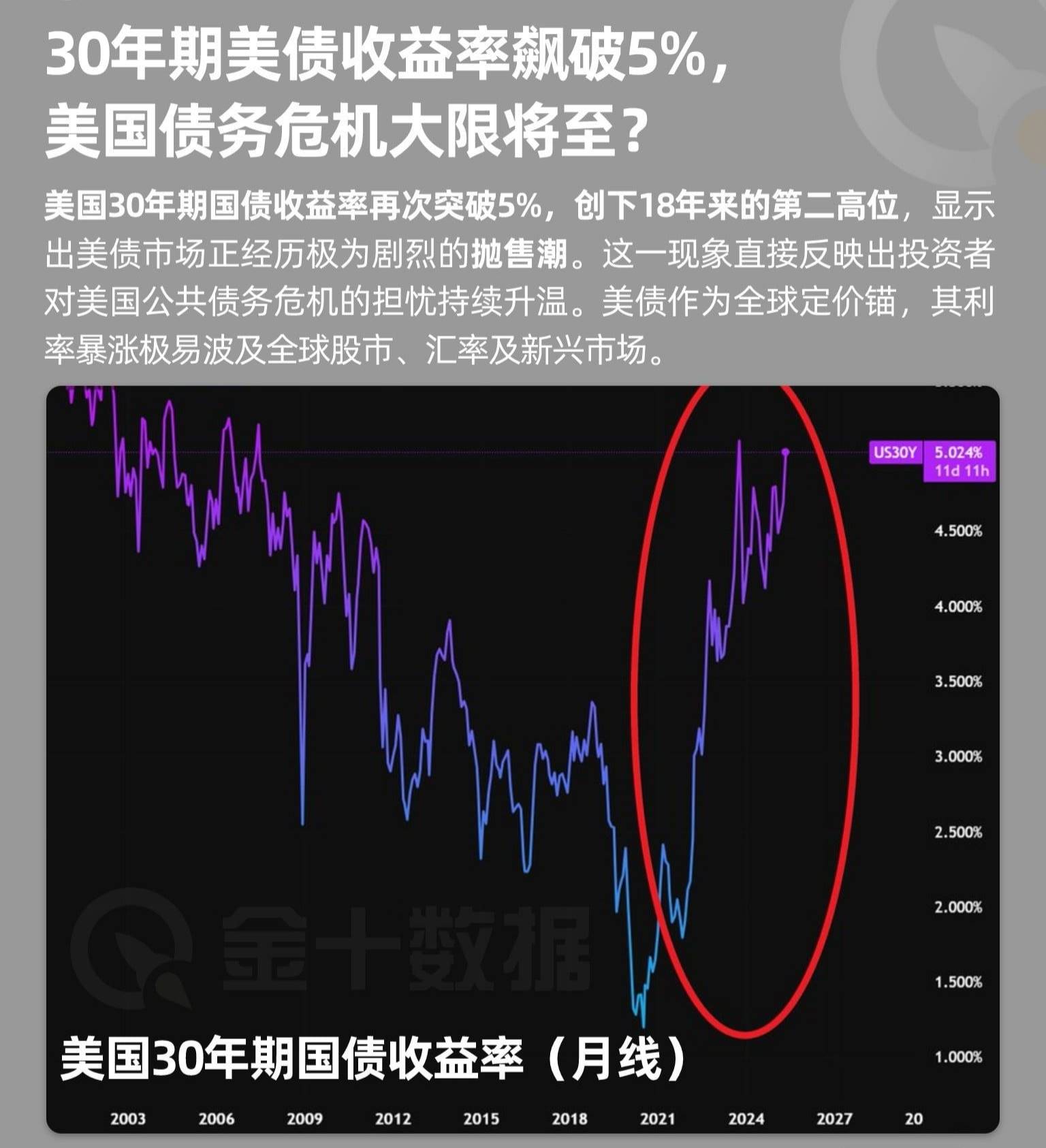
Source: Jin10 Data
In 2025 and 2026, we know that the U.S. has an enormous amount of national debt maturing, which is the sword of Damocles hanging over the U.S. and Trump. At 80 years old, Trump has maintained such a high-intensity work schedule in the past 90 days, which is enough to glimpse the situation.
Many historical accounts of the end of dynasties are often experienced through imagination, always wondering why a hero cannot descend from the heavens. However, the U.S. is now a living example, carrying a sense of the end of a dynasty; this feeling can be summarized as—this hole cannot be filled by anyone.
Initially, Trump hoped to create an economic recession to lower national debt interest rates, essentially using a double blow to stocks and currencies to save the bond market, but the result unexpectedly turned into a triple blow to stocks, bonds, and currencies.
So Trump found a reason to temporarily calm the storm and went back to think about how to deal with the aftermath. But this does not mean the storm is over; Trump genuinely wants to work on tariffs to balance income and expenditure. On the other hand, Trump does not want to decouple from China. The thoughts of a businessman are simple yet complex—simple in that they will not refuse to make money, complex in that they want more in profit distribution, but ultimately, they will still converge.
Of course, time will solve everything.
Some say cryptocurrencies can solve the U.S. debt problem; theoretically, this statement is not without merit. We assume that countries use their own currencies to purchase stablecoins, supporting stablecoins with dollars to buy U.S. bonds, which is roughly equivalent to countries purchasing U.S. bonds. Additionally, the Bitcoin held by the U.S. government will continue to appreciate, bringing in considerable income. However, ideals are beautiful, while reality is harsh; the scale of stablecoins in the hundreds of billions is merely a drop in the bucket compared to the U.S. $40 trillion scale, and the gap between the two is gradually widening. Even if BTC were to go all-in on its entire market value, it would only cover one year's interest expenditure on U.S. debt, not to mention that the U.S. government and corporations hold only 5% of BTC.
In other words, even if one wants to solve the U.S. debt problem through the above two methods, it would require years of accumulation and waiting.
Therefore, the key question is—how long can U.S. debt hold out, or how long can the dollar payment system last— the Bretton Woods system lasted only 27 years before collapsing, while the debt monetary system that has existed since the collapse of Bretton Woods has lasted for 54 years. Regarding its cycle, we both hope it survives and look forward to its rebirth.
Perhaps, decades from now, when people look back at history, they will find that a new era may have already begun from today.
"The autumn wind is bleak, and the world has changed."
免责声明:本文章仅代表作者个人观点,不代表本平台的立场和观点。本文章仅供信息分享,不构成对任何人的任何投资建议。用户与作者之间的任何争议,与本平台无关。如网页中刊载的文章或图片涉及侵权,请提供相关的权利证明和身份证明发送邮件到support@aicoin.com,本平台相关工作人员将会进行核查。




